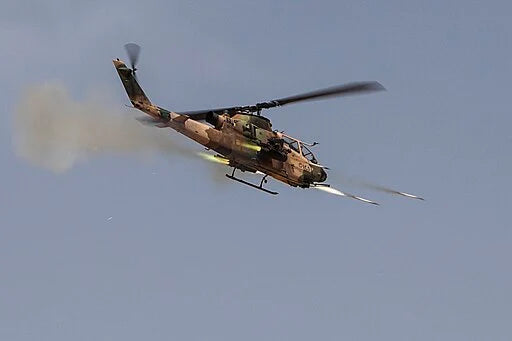Specific helicopter models stand out for their operational capabilities and distinctive architectural elements in helicopter design. The Russian Ka-52 “Alligator” and the American AH-1 Cobra are prime exemplars among these. Each offers a masterclass in design philosophy, bearing unique features that cater to their specific missions. Let’s embark on a journey through engineering, aerodynamics, and aesthetics as we unpack the defining elements of these rotary-winged wonders.
The Ka-52 “Alligator”: A Dance of Dual Rotors
The Ka-52 is an evolution in helicopter design, with features that can make even the most seasoned aviation enthusiast double-take.
Coaxial Rotors: The coaxial rotor design is something you see only sometimes and shakes things up from the usual chopper setup we’re all familiar with. Instead of the standard main rotor and tail rotor combo most helicopters have, the Alligator boasts a pair of main rotors stacked right on top of each other, spinning away in contrasting directions. It’s quite the sight! This configuration offers increased lift and agility, eliminating the need for a tail rotor and its associated torque-countering mechanism. The result? Enhanced maneuverability, especially in tight or complex environments.
Armored Cockpit: Built for the harsh realities of combat, the Ka-52’s cockpit is an armored sanctuary. Its robust design ensures pilot protection against various threats, granting a measure of security in hostile terrains.
Ejection Seats: A rarity in helicopters, the Ka-52’s ejection seats are a nod to pilot safety. In the event of a catastrophe, explosive charges first jettison the rotor blades, followed by the rapid ejection of the crew, allowing them to parachute safely away.
The AH-1 Cobra: Sleekness Meets Functionality
With its sleek, narrow frame, the Cobra departs from the bulky silhouettes commonly associated with helicopters. Its design is a masterclass in functional minimalism.
Slim Fuselage: The Cobra’s signature slender frame isn’t merely an aesthetic choice. This design reduces its radar cross-section, making it a more challenging target for enemy defenses. The streamlined shape enhances its speed and agility, allowing the Cobra to strike swiftly and retreat equally.
Tandem Seating: Unlike the side-by-side seating configuration in many helicopters, the Cobra opts for a tandem setup. The pilot sits behind and above the gunner, granting both crew members unobstructed views of their surroundings. This configuration further accentuates the Cobra’s slim profile, minimizing its threat exposure.
Stub Wings: Stub wings protrude from the Cobra’s sides for aesthetics and armament. These wings house a variety of weapons, from rocket pods to missile systems, turning the Cobra into a veritable flying arsenal.
Synthesis of Design Philosophies
While the Ka-52 and the Cobra hail from different design schools and serve varied operational needs, they both underscore a critical principle: form the following function. Every curve, rivet, and blade serves a purpose, whether the Alligator’s coaxial dance or the Cobra’s sleek serenade.
The world of military aviation is replete with examples of engineering brilliance. Yet, in the Ka-52 and the Cobra, we witness a unique confluence of design and purpose. They’re not just machines but manifestations of their nations’ aspirations, challenges, and relentless pursuit of aerial excellence. When next you see their silhouettes against the horizon, take a moment to appreciate the design stories they tell—tales of innovation, adaptation, and the never-ending quest for the skies.
For more insights into the AH-1 Cobra Helicopter and other important military aircraft, visit Aces In Action. Here, you’ll find an amazing piece of artwork by Craig Tinder titled “Centaur Cobras,” which illustrates the crews in Vietnam who flew the Bell AH-1 Cobra Gunship. The limited edition canvas print even includes an actual relic from an AH-1 Cobra Gunship.
Centaur Cobras – Cobra Helicopter Aviation Art by Craig Tinder
August 1972 – 1LT Kenneth R. “Ken” Mick surveys the landscape in his AH-1G Cobra Gunship (68-15012) in support of the Second Brigade, 25th Infantry Division over the skies of Vietnam. By mid-1972, enemy forces employed the SA-7 “Strela” Surface-to-Air Missle against U.S. helicopters. To counter this new threat, an “up-turned” exhaust and auxiliary scoop kit were retrofitted to counter the SA-7s heat-seeking ability. ‘012 was one of the first combat Cobras to receive the upgraded suppression kit.






Share:
The Allure of Ownership: Why WWII Planes Are Up for Sale Today
From High Altitudes to Ground Realities: Why the U2 Spy Plane’s Design Makes it Difficult to Fly